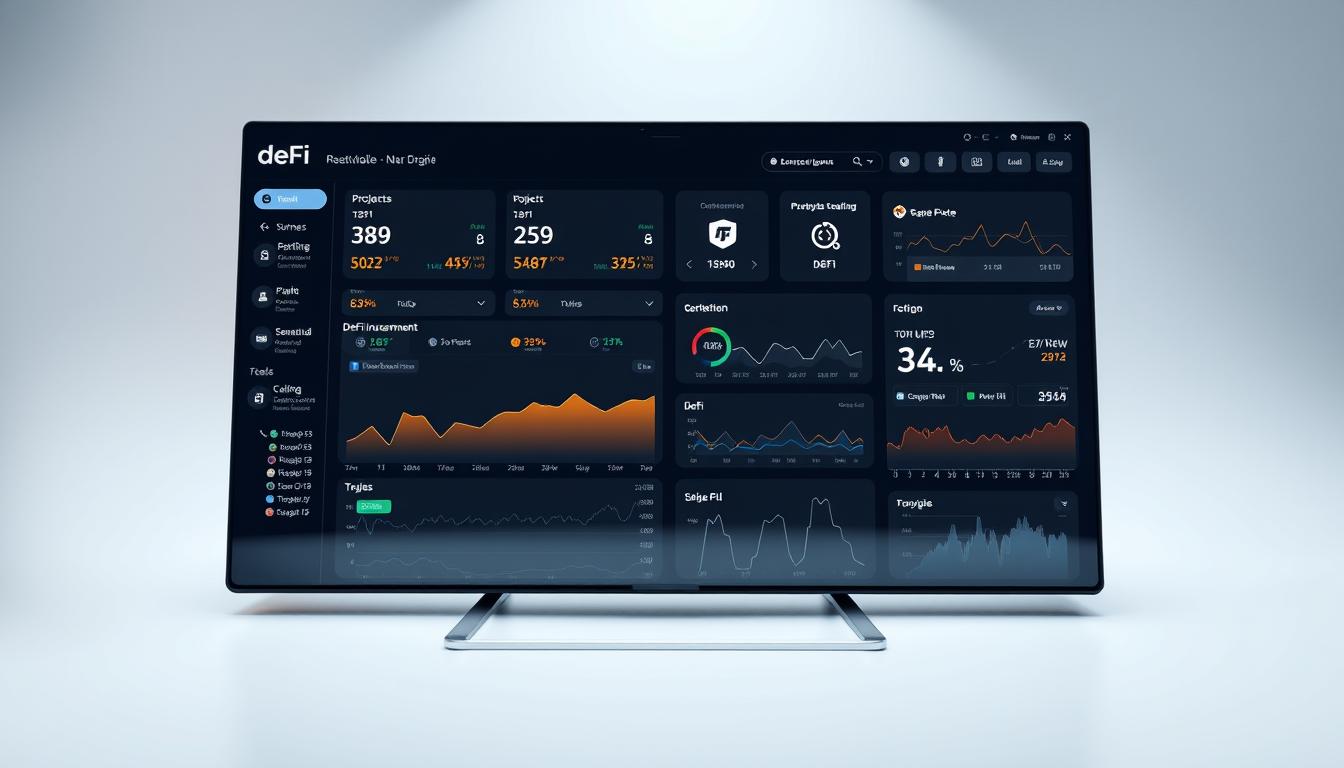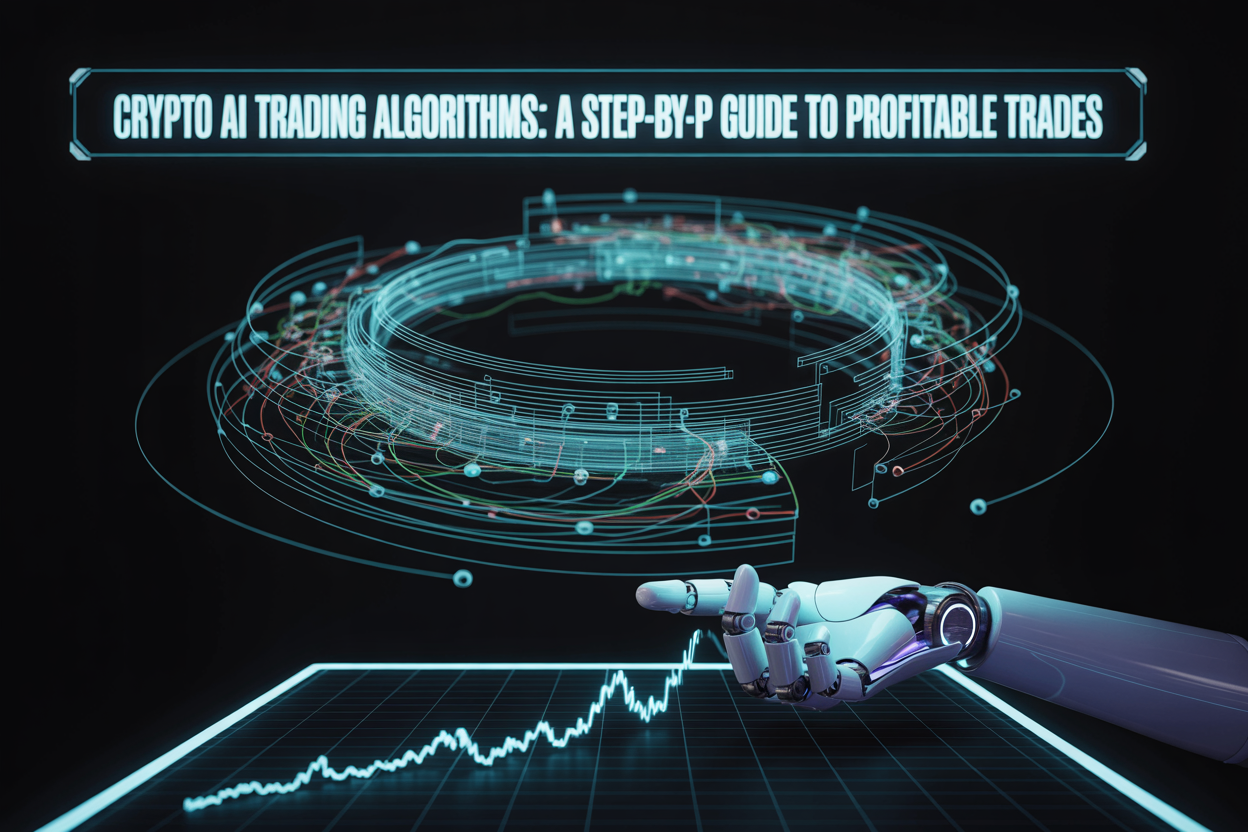Now Reading: Discover the Latest DeFi News and Trends
- 01
Discover the Latest DeFi News and Trends
Discover the Latest DeFi News and Trends

The world of decentralized finance is changing fast. New things happen every day. It’s key to keep up with the DeFi news for investors and fans.

The DeFi world is getting bigger. It’s important to know the newest trends and updates. This includes cryptocurrency news and fresh financial ideas. DeFi is changing how we see money and financial services.
Key Takeaways
- Stay informed about the latest DeFi news and trends
- Understand the current state of the DeFi ecosystem
- Learn about the impact of decentralized finance on the financial industry
- Get updates on the latest cryptocurrency news
- Discover new developments in the DeFi space
The Current State of DeFi in 2023
In 2023, the DeFi world is growing fast. It’s seeing big growth, new tech, and more people using it.
Market Size and Growth Statistics
The DeFi market is growing a lot in 2023. It’s showing good signs with:
- Total Value Locked (TVL) in DeFi protocols
- User adoption rates across different platforms
Total Value Locked (TVL) Metrics
The TVL in DeFi has gone up a lot. This shows people trust DeFi more. By 2023, the TVL is at $X billion, up X% from last year.
More people are using DeFi in 2023. Now, X million unique users are enjoying decentralized apps and services.
Major DeFi Protocols and Their Performance
How well DeFi protocols do is key. We’re talking about lending platforms and decentralized exchanges.
Leading Lending Platforms
Platforms like Compound and Aave are very active. They’ve issued $X billion in loans.
Top Decentralized Exchanges
DEXs like Uniswap and SushiSwap lead in trading. They handle $X billion in trades every day.
DeFi in 2023 is booming. It’s seeing more users, growth, and new DeFi services.
Understanding the Fundamentals of Decentralized Finance
Getting to know DeFi is key to understanding its complex world. Decentralized Finance, or DeFi, is a big change in finance. It offers new, decentralized ways to handle money.
Key Concepts and Terminology
DeFi heavily uses the Ethereum ecosystem. Many DeFi projects are built on Ethereum. Important terms include smart contracts and liquidity pools. These are vital for how DeFi works.
Smart Contracts and Their Role
Smart contracts are like self-running contracts. They have the rules written in code. They are key in DeFi for automating things like lending and borrowing.
Liquidity Pools Explained
Liquidity pools are groups of funds in a smart contract. They make DeFi protocols work. They help with trading, lending, and more.
The Evolution from Traditional Finance to DeFi
The move from traditional finance to DeFi is big. DeFi is more open and clear than old finance systems.
Key Differences and Advantages
DeFi doesn’t need middlemen, which saves money and makes things faster. Tokenomics insights help us understand DeFi’s economic models.
Barriers to Mainstream Adoption
Even with its benefits, DeFi has hurdles like unclear rules and safety concerns. Fixing these problems is crucial for DeFi to become widely accepted.
How to Find Reliable Sources for DeFi News
In the fast-paced DeFi sector, finding trustworthy news outlets is key for investors and fans. With decentralized finance changing fast, staying up-to-date is vital.
Step1: Identify Reputable DeFi News Websites
Start by finding reliable DeFi news websites. These sites give you the latest on cryptocurrency news and digital assets updates.
Specialized Crypto News Platforms
Some websites focus on cryptocurrency news, including DeFi. Check out:
- CoinDesk
- CoinTelegraph
- CryptoSlate
Industry-Specific Publications
Financial and tech publications also cover DeFi news. Look at:
- Financial Times
- Forbes
- Wired
Step2: Follow Key DeFi Influencers and Analysts
Following DeFi influencers and analysts can give you insights. They share their views on new trends and updates.
Twitter Accounts to Follow
Twitter is great for quick updates. Follow these influential accounts:
- @VitalikButerin
- @APompliano
- @CryptoCobain
Podcast Recommendations
Podcasts are also a good source of info. Check out these podcasts:
- The Defiant
- Unchained
- Bankless
Step3: Set Up Custom News Alerts and Notifications
Custom news alerts can keep you updated on DeFi topics.
Using Google Alerts for DeFi Topics
Google Alerts is great for tracking DeFi news. Set alerts for keywords like “DeFi news” or “DeFi updates.”
Configuring Crypto News Apps
Many crypto news apps let you customize notifications. Try these:
- Blockfolio
- Delta
- CoinStats
By following these steps, you’ll get reliable DeFi news. This keeps you informed about decentralized finance’s latest.
Analyzing DeFi Market Trends and Patterns
The DeFi world is changing fast. It’s key to understand market trends and patterns. Investors and fans need the right tools and insights to stay ahead.
Access DeFi Analytics Platforms
To start analyzing DeFi trends, you need to use reliable analytics platforms. These tools give important data on DeFi protocols and how they perform.
DeFi Pulse and DeFiLlama
DeFi Pulse and DeFiLlama are top platforms for DeFi insights. They track TVL, trading volumes, and more.
Token Terminal and Dune Analytics
Token Terminal and Dune Analytics offer deep analytics on DeFi protocols. They show revenue and user activity, helping understand DeFi projects’ financial health.
Interpret Key Performance Indicators
With access to analytics platforms, the next step is to understand key performance indicators (KPIs). KPIs like TVL and trading volume give insights into market trends.
Understanding TVL Fluctuations
TVL shows the total value of assets in DeFi protocols. Changes in TVL can signal shifts in market sentiment and investor confidence.
Analyzing Trading Volume Patterns
Trading volume patterns show DeFi market activity. High volumes mean strong interest, while low volumes suggest less investor engagement.
Identify Emerging Trends and Opportunities
Understanding DeFi trends also means spotting new opportunities. By recognizing new protocol categories and yield farming chances, investors can find growth areas.
Recognizing New Protocol Categories
New protocol categories pop up as DeFi grows. Spotting these early can give you a market edge.
Spotting Yield Farming Opportunities
Yield farming is a big deal in DeFi. By looking at yield farming chances, investors can boost returns and diversify their portfolios.
The Latest DeFi News and Developments
The DeFi world is always changing, with new updates coming out often. It’s important to keep up with these changes for those in the DeFi field.
Recent Protocol Launches and Updates
Recently, the DeFi space has seen many new protocols and updates. These changes have made DeFi protocols more useful and easier to use.
New Layer 2 Solutions
New Layer 2 solutions aim to make the Ethereum ecosystem faster and cheaper. These solutions could greatly change the DeFi world.
- Optimism: A popular Layer 2 scaling solution that has seen significant adoption.
- Arbitrum: Another prominent Layer 2 solution that offers fast and cheap transactions.
Protocol Upgrades and Forks
Many DeFi protocols have had big updates and forks. These changes have made them more secure and functional. Keeping the DeFi ecosystem safe is key.
Notable upgrades include:
- Uniswap v3: A major upgrade that introduced new features and improved capital efficiency.
- Aave v2: An upgrade that enhanced the protocol’s lending capabilities and user experience.
Regulatory Developments Affecting DeFi
Regulations are playing a big role in the DeFi world. Recent government actions and industry efforts are important for DeFi’s future.
Recent Government Actions
Governments worldwide are regulating DeFi. These actions affect DeFi projects and users a lot.
Recent actions include:
- The US SEC issuing guidelines on DeFi regulations.
- The EU proposing new regulations on cryptocurrency and DeFi.
Industry Self-Regulation Efforts
The DeFi industry is also working to regulate itself. These efforts help promote good practices and improve security in DeFi.
Notable Partnerships and Collaborations
The DeFi space is seeing a lot of partnerships and collaborations. These alliances help drive innovation and growth in DeFi.
DeFi and TradFi Integrations
DeFi and traditional finance (TradFi) are teaming up more often. These partnerships could help connect the two financial systems.
Cross-Protocol Alliances
Cross-protocol alliances are becoming more common. They allow different DeFi protocols to work together smoothly. This makes the DeFi ecosystem more functional.
How to Track DeFi Projects and Investments
Tracking DeFi projects and investments is key in today’s fast-changing digital assets world. As DeFi grows, it’s important for investors to keep up with how their investments are doing and any risks they might face.
Step1: Choose Portfolio Management Tools
Choosing the right tools for managing your portfolio is the first step. These tools help you keep track of your digital assets across different platforms.
DeFi Dashboard Options
DeFi dashboards give you a detailed look at your investments. They show real-time data on how your portfolio is doing. Zapper and DeFi Pulse are popular options. They collect data from many places, giving you a clear view of your digital assets.
Portfolio Tracking Apps
Apps like Blockfolio and Delta let you watch your investments on different exchanges and wallets. They offer features like price alerts and news updates. This helps you make better choices.

Step2: Monitor Protocol Performance Metrics
It’s important to keep an eye on how well DeFi protocols are doing. This means looking at different signs that show the protocol’s health and potential.
Evaluating Protocol Health Indicators
Important signs include total value locked (TVL), transaction volumes, and how many users are using the protocol. These show if the protocol is stable and growing. For example, a rising TVL means more people trust the protocol.
Tracking Governance Decisions
Decisions made by the protocol’s governance can greatly affect its future. Watching proposals and votes helps you understand what’s changing and why. Snapshot makes it easy to vote on proposals and stay updated.
Step3: Implement Risk Assessment Strategies
It’s vital to have strategies for managing risks in the unpredictable DeFi market. This means looking at smart contract risks, impermanent loss, and other dangers.
Smart Contract Risk Evaluation
Smart contract risks come from possible weaknesses in the code. It’s important to check audit reports and see how the protocol protects itself. Audit reports from trusted firms can really boost your confidence in a protocol’s safety.
Impermanent Loss Calculation
Impermanent loss happens when the value of assets in a pool changes. Knowing this risk helps you understand the dangers of providing liquidity. Online tools and calculators make it easier to figure out this risk.
By following these steps and using the right tools, you can keep a close eye on your DeFi projects and investments. This way, you can make more informed choices.
Understanding DeFi Yield Farming and Liquidity Mining
DeFi yield farming and liquidity mining are key parts of the decentralized finance world. They help users earn more by adding liquidity to DeFi projects.
Step1: Evaluate Current Yield Farming Opportunities
To start with yield farming, look at what’s available. Compare the Annual Percentage Yield (APY) and token rewards across platforms.
Comparing APY Across Platforms
APYs vary among DeFi projects, affecting your earnings. Some offer high APYs but with more risks. It’s important to carefully compare these rates and understand the risks.
Assessing Token Incentives
DeFi projects often give out tokens to those who provide liquidity. These tokens can be extra coins or a share of the project’s earnings. Knowing the tokenomics of these rewards is key to making smart choices.
Step2: Assess Risks of Liquidity Provision
Providing liquidity has its own risks, like smart contract flaws and market ups and downs.
Smart Contract Vulnerabilities
Smart contract risks are a big worry in DeFi. A weak contract can cause loss of funds through exploits. Always check the security audits and the protocol’s reputation before adding liquidity.
Market Volatility Considerations
Market changes can also impact your liquidity’s value. Impermanent loss is a risk when adding liquidity to decentralized exchanges. It’s important to understand these risks and how to handle them.
Step3: Implement Yield Optimization Strategies
To boost earnings, DeFi investors can use various strategies to optimize yields.
Auto-compounding Techniques
Auto-compounding reinvests your returns to increase compounding effects. This method can greatly increase your earnings over time.
Yield Aggregator Utilization
Yield aggregators automatically put your funds in the most profitable yield farming spots. They make optimizing your returns easier. For more on yield farming, check out this resource.
Navigating DeFi Security Challenges
The DeFi world is growing fast but faces many security risks. It draws in many people, from small investors to big companies. All these groups can be targets for bad actors.
Understand Common Security Threats
DeFi faces many threats, like smart contract bugs and user mistakes. Knowing these threats is key to fixing them.
Flash Loan Attack Vectors
Flash loan attacks are a big problem in DeFi. They use short-term loans to mess with markets or empty out pools of money.
Oracle Manipulation Risks
Oracles give data to smart contracts but can be tricked. This can mess up prices and harm trades or lending.
Learn from Recent Hacks and Exploits
Looking at recent hacks helps us understand how to avoid them. It shows us how attackers work and how to stop them.
Case Studies of Major Incidents
Big hacks teach us a lot. By looking at why they happened, we can make DeFi safer.
Protocol Response Analysis
How DeFi protocols handle hacks is just as important. Good responses can lessen damage and keep users trusting.
Implement Security Best Practices
Keeping DeFi safe means following best practices. This includes using safe wallets, watching transactions, and knowing about threats.
Hardware Wallet Integration
Hardware wallets are a top security choice. They keep private keys safe offline, making hacking much harder.
Transaction Verification Procedures
Checking transactions before they happen can stop losses. It’s about double-checking and using tools to spot scams.
As DeFi grows, knowing about security is crucial. By understanding threats, learning from past hacks, and using strong security, we can safely explore DeFi.
The Role of DAOs in Shaping DeFi’s Future
DAOs are key in shaping DeFi. They bring community-driven decision-making and governance to the forefront.
Discover Prominent DeFi DAOs
The DeFi world has many DAOs, each with its own role. Two main types are:
Protocol Governance DAOs
These DAOs manage DeFi protocols. For example, MakerDAO oversees the Maker Protocol. MKR token holders vote on important decisions.
Investment DAOs
Investment DAOs make collective investment choices. They pool resources for DeFi projects. The Syndicate DAO is a good example, offering members investment opportunities.
Learn How to Participate in DAO Governance
To join DAO governance, you need to know how decisions are made. Two main aspects are:
Token Voting Mechanisms
DAOs use token-based voting. The more tokens you have, the more you can vote. This way, those who care more get to decide more.
Delegation Strategies
If you don’t want to vote yourself, you can delegate. This lets you choose someone to vote for you, keeping your interests safe.
Analyze DAO Proposals and Voting Patterns
To really participate in DAO governance, you should look at proposals and voting patterns. This means:
Proposal Evaluation Framework
When evaluating proposals, look at their impact, risks, and how they align with the community. A good framework helps make these assessments.
Voting Trend Analysis
Understanding voting trends helps see what the community wants. Look at past votes and their results to get a sense of where the DAO might go.

By getting involved with DAOs, you help DeFi grow. Keeping up with decentralized finance updates and digital assets updates is key. Also, learning about tokenomics insights helps you understand DeFi’s economic models better.
Cross-Chain DeFi: Bridging Different Blockchain Ecosystems
Cross-chain DeFi is changing how we work with different blockchain systems. It brings new chances. As DeFi grows, linking various blockchain networks smoothly is key.
Step1: Explore Major Cross-Chain Protocols
Understanding major cross-chain protocols is vital. They make it possible to move assets and data between blockchains.
Bridge Technology Comparison
There are many bridge technologies used in cross-chain protocols. Some lock and mint, others use liquidity pools. Knowing these helps judge transaction safety and speed.
Security Considerations
Security is crucial in cross-chain dealings. Risks like smart contract flaws and bridge hacks are real. It’s important to check each protocol’s security.
Step2: Identify Multi-Chain DeFi Opportunities
Cross-chain DeFi brings many chances across blockchains. Spotting these chances helps spread investments and boost earnings.
Yield Differences Across Chains
Yield farming results differ on each blockchain. Comparing yields helps improve investment plans.
Arbitrage Possibilities
Arbitrage chances arise from price gaps between blockchains. Users can make money by taking advantage of these gaps.
Step3: Execute Cross-Chain Transactions Safely
Safe cross-chain transactions are essential. Following best practices and using secure methods is key.
Bridge Usage Tutorial
To do cross-chain transactions, knowing how to use bridges is important. This includes linking wallets, picking assets, and confirming deals.
Risk Mitigation Techniques
Using strategies to reduce risks is crucial in cross-chain DeFi. This includes spreading investments, setting stop-loss orders, and keeping up with market news.
DeFi Regulation and Compliance: Staying Informed
It’s important to keep up with DeFi regulation and compliance. The DeFi world is always changing. Governments worldwide are watching it closely.
Step1: Monitor the Regulatory Landscape
First, you need to watch the regulatory scene. This means knowing how different places handle DeFi rules.
Regional Regulatory Approaches
Every area has its own rules. For example, the U.S. has many agencies working together. The European Union is moving towards one set of rules.
Industry Response Tracking
It’s also key to see how DeFi reacts to new rules. Watch what big players say and do.
Step2: Utilize Compliance Tools and Resources
Using the right tools and resources is crucial. They help keep DeFi projects and users in line with the law.
KYC/AML Solutions for DeFi
It’s vital to have Know Your Customer (KYC) and Anti-Money Laundering (AML) solutions. They stop bad activities and follow the law.
Tax Reporting Software
DeFi users also need tax reporting software. It makes sure they report their DeFi earnings right.
Step3: Prepare for Future Regulatory Changes
Getting ready for new rules means planning ahead. This includes spreading out investments and thinking about where to operate.
Diversification Strategies
Spreading investments across different DeFi projects and assets can reduce risks from new rules.
Jurisdictional Considerations
Knowing about different places’ rules is also important. Picking the right place to operate is key for DeFi projects.
In summary, keeping up with DeFi rules is a constant task. By watching the rules, using the right tools, and planning for the future, DeFi folks can handle this complex world better.
Building a Diversified DeFi Strategy
A well-diversified DeFi portfolio can help reduce risks and increase returns. Investors need to look at several factors. These include the Ethereum ecosystem and tokenomics insights.
Step1: Balance Risk and Reward in Your Portfolio
It’s important to balance risk and reward in DeFi investing. This means checking the risks of different protocols and spreading out your investments.
Protocol Risk Assessment
Checking the security, scalability, and usability of DeFi protocols is key. Look for protocols with strong security and a good track record.
Asset Allocation Models
Using a good asset allocation model helps manage risk. This might mean spreading investments across lending, yield farming, and liquidity pools.
Step2: Combine Different DeFi Protocols and Services
Mixing different DeFi protocols and services can boost your portfolio. This could include using lending and borrowing platforms together with derivatives and options.
Lending and Borrowing Integration
Adding lending and borrowing to your DeFi strategy can bring in extra income. Platforms like Compound and Aave are good for this.
Derivatives and Options Strategies
Using derivatives and options can help protect against market ups and downs. Platforms like dYdX are great for these strategies.
Step3: Develop Long-term vs. Short-term Approaches
Investors should think about both long-term and short-term strategies in DeFi. This means balancing passive income with active trading.
Passive Income Strategies
Passive income strategies, like yield farming and liquidity provision, offer steady returns. Keep an eye on digital assets updates to improve your strategy.
Active Trading Techniques
Active trading means watching market trends closely and making quick trades. It’s important to stay updated on market news and Ethereum ecosystem changes.

The Road Ahead: Navigating the Future of DeFi
The DeFi world is changing fast, with new trends and chances popping up all the time. Looking ahead, DeFi will keep shaping the financial tech scene. Recent partnerships, like DeFi Dev Corp. and Solflare, are boosting DeFi use and knowledge. Solflare, a digital wallet for Solana with over four million users worldwide, is now the go-to wallet for DeFi Dev Corp.’s products. For more on this partnership, check out the press release.
As DeFi grows, it’s key to stay current with DeFi news and blockchain trends. The future of DeFi looks bright, with chances for better cross-chain work, following rules, and safety. Keeping up with financial tech news helps people understand the DeFi world’s chances and hurdles.
FAQ
What is DeFi and how does it differ from traditional finance?
DeFi stands for decentralized finance. It uses blockchain technology for financial services. This means you can do transactions without banks or middlemen.
It’s different from traditional finance because it’s open to everyone. You can lend and borrow directly with others, not through banks.
What are the risks associated with investing in DeFi protocols?
Investing in DeFi comes with risks. These include bugs in smart contracts and changes in the market. There’s also a chance of not getting your money back.
It’s important to do your homework before investing. Look at how secure the protocol is and understand the risks.
How can I stay up-to-date with the latest DeFi news and trends?
To keep up with DeFi news, check out Coindesk, The Defiant, and Decrypt. Follow DeFi influencers on Twitter and join Reddit’s r/DeFi.
Subscribe to newsletters and online forums. This way, you’ll always know what’s happening in DeFi.
What is yield farming, and how does it work?
Yield farming is a way to earn interest in DeFi. You lend or provide liquidity to earn rewards in cryptocurrency.
It works by putting your assets into a pool. This pool is used for transactions, and you earn from it.
How do I track my DeFi investments and stay on top of market trends?
Use tools like DeFi Dashboard, Zapper, or Zerion to track your investments. Set up news alerts and follow analytics platforms like DeFi Pulse.
Watch for TVL and trading volume. This helps you understand the market and make informed decisions.
What are DAOs, and how do they impact DeFi governance?
DAOs are community-led organizations on blockchain. They make decisions without a central authority. In DeFi, DAOs help make decisions through voting.
This way, everyone involved has a say. It promotes fair and open governance in DeFi.
How can I ensure the security of my DeFi investments?
Use hardware wallets and enable two-factor authentication. Be careful of scams and research the security of DeFi protocols.
Monitor for vulnerabilities and use tools like transaction verification services. This helps keep your investments safe.
What is the current regulatory landscape for DeFi, and how might it evolve?
DeFi’s regulatory landscape is changing. Different places have different rules. Some are clear, while others are still figuring it out.
As DeFi grows, we can expect more rules. This could shape the industry in big ways.















